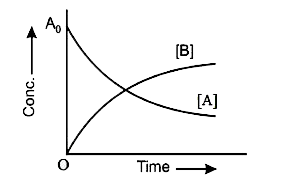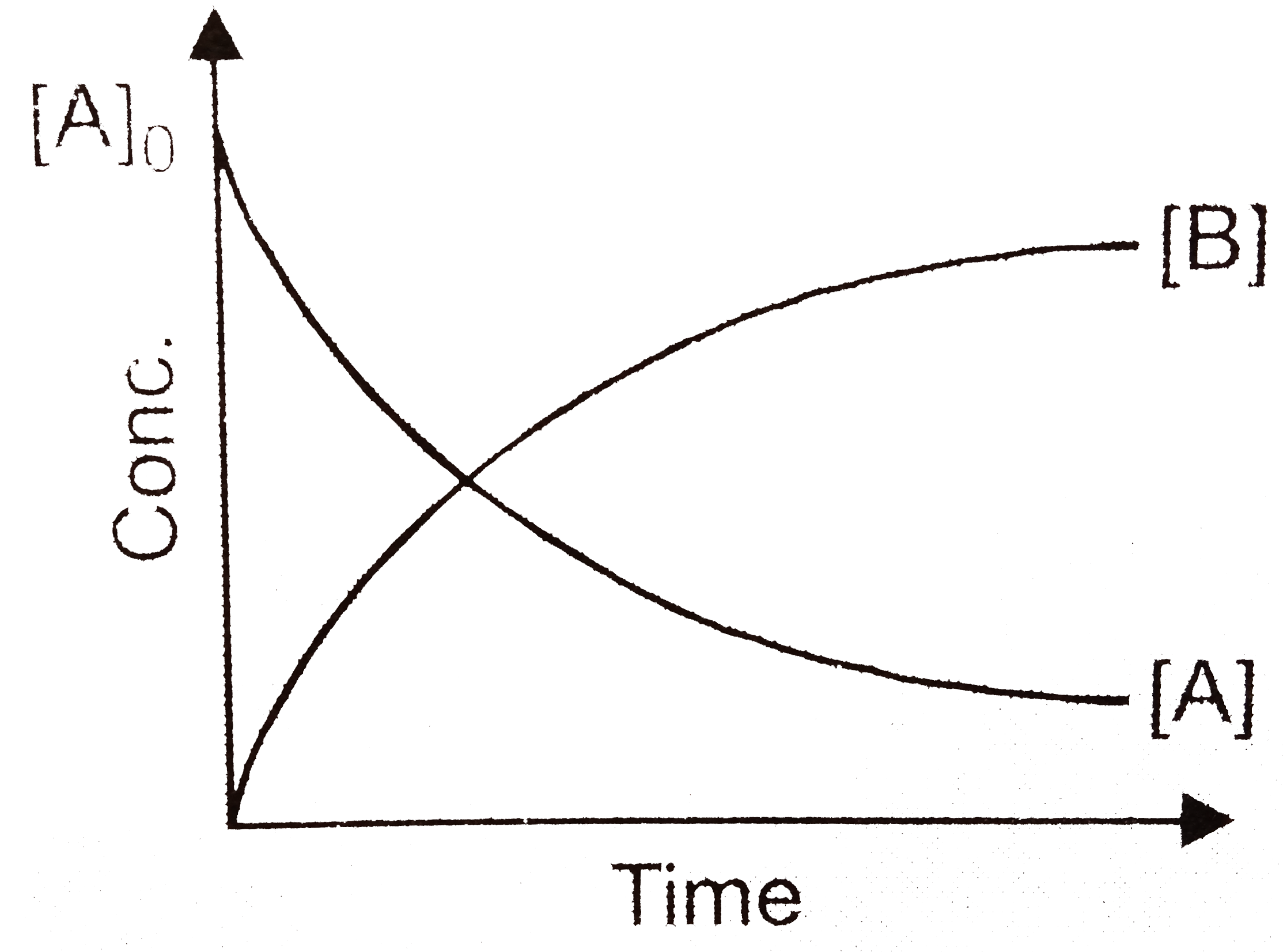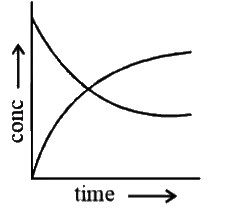At the point of intersection of the two curves shown the concentration of B is given by _______for the first reaction A→nB.

nA02
A0n−1
nA0n+1
(n−1n+1)A0
The correct Answer is:C
Step by step video & image solution for At the point of intersection of the two curves shown the concentration of B is given by _______for the first reaction A to nB. by Chemistry experts to help you in doubts & scoring excellent marks in Class 12 exams.
Updated on:21/07/2023Topper's Solved these Questions
Similar Questions
Knowledge Check
At the given point of intersection of the two curves shown concentration of B is given by ………for, A=3B
 A4/3A0B3/4A0C1/3A0D1/4A0
A4/3A0B3/4A0C1/3A0D1/4A0At the point of intersection of the two curves shown, calculate the concentration of B in the first order reaction A→nB.
 AnA02BA0n−1CnA0n+1D(n−1n=1)A0
AnA02BA0n−1CnA0n+1D(n−1n=1)A0At the point of intersection of the two curves shown, the conc. of B is given by ……… for, A→nB:
 AnA02BA0n−1CnA0n+1D(n−1n+1)A0
AnA02BA0n−1CnA0n+1D(n−1n+1)A0
At the point of intersection of the two curves shown, the conc.of B is given by….. ….. ……….for, A→nB

View SolutionCurve of intersection of two spheres in
View SolutionCurve of intersection of two spehere is
View SolutionThe rate and mechamical reaction are studied in chemical kinetics. The elementary reactions are single step reaction having no mechanism. The order of reaction and molecularity are same for elementary reactions. The rate of forward reaction aA+bB→cC+dD is given as:
rate=(dxdt)=−1ad[A]dt=−1bd[B]dt=1cd[C]dt=1dd[D]dt or expression can be written as : rate =K1[A]a[B]b−K2[C]c[D]d. At equilibrium, rate =0. The constants K,K1,K2 are rate constants of respective reaction. In case of reactions governed by two or more steps reaction mechanism, the rate is given by the slowest step of mechanism.
At the point of intersection of the two curve shown for the reaction: A→nB the concentration of B is given by:

View SolutionWhich concentration plot is linear for a first order reaction?
View Solution
